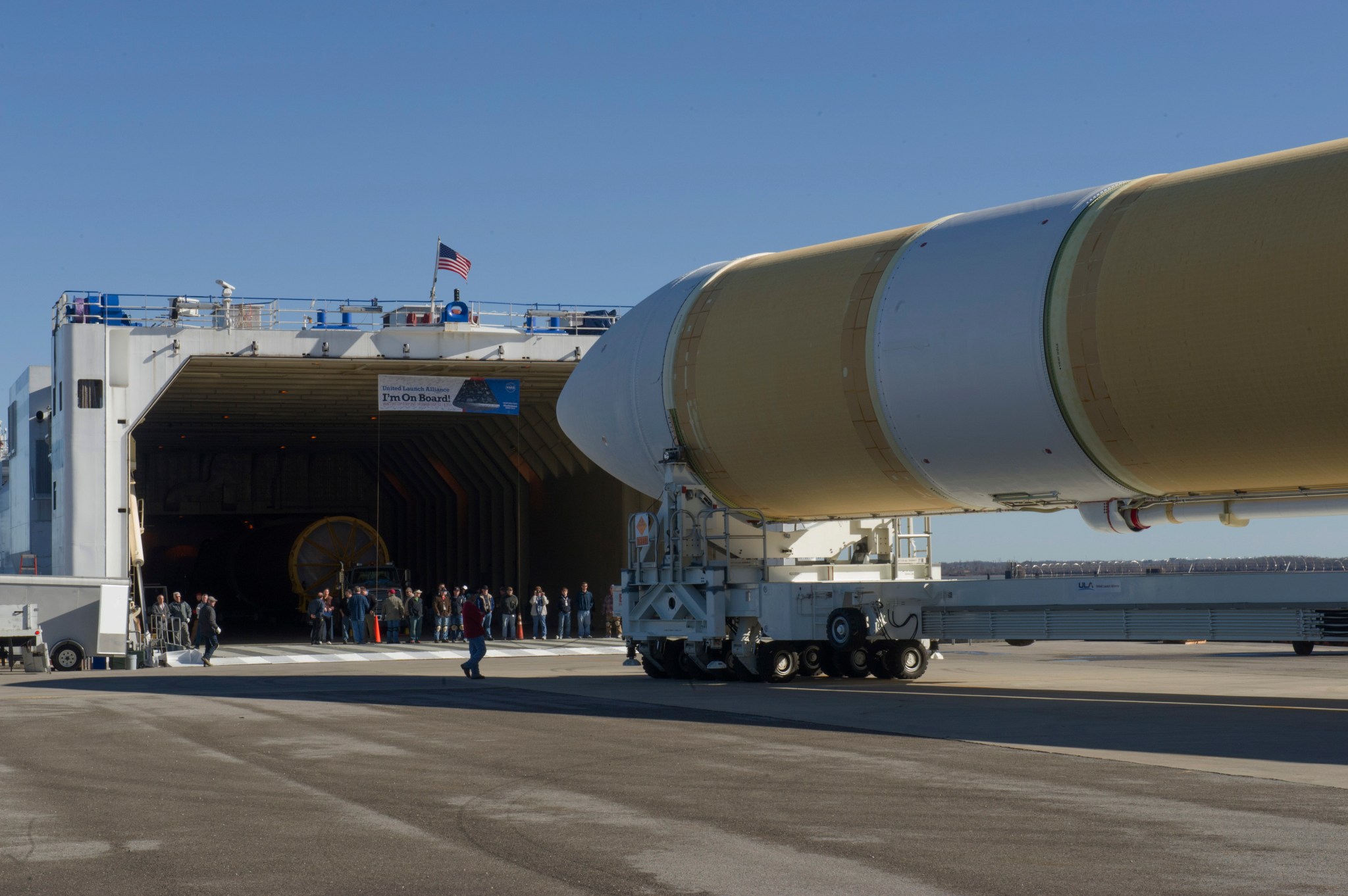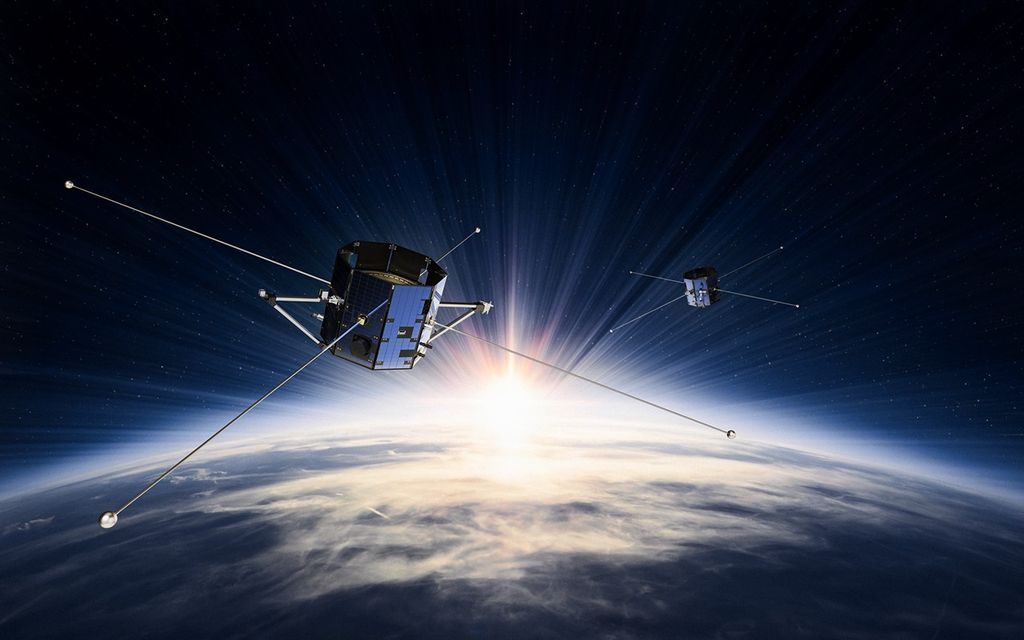Two of the boosters that will help send NASA’s Orion spacecraft into space for the first time are on their way to Florida.
Orion will launch on top of a Delta IV rocket this fall, and two of the rocket’s three boosters were rolled out of the United Launch Alliance (ULA) facility in Decatur, Ala., and loaded onto a Mariner cargo barge Feb 21.
ULA is constructing the Delta IV for the flight test of Orion, called Exploration Flight Test-1, or EFT-1. From ULA, the boosters will arrive at Cape Canaveral, Fla., in early March for final processing prior to the launch. A third booster is still in fabrication at the Decatur facility.
“This is a very exciting time for NASA,” said Bill Hill, NASA assistant deputy associate administrator for exploration systems. “EFT-1 is a big milestone for us, and is the start of venturing further into space than we ever have before. Seeing these rocket boosters roll out headed for the Cape is a testament of the hard work taking place to help further NASA’s space exploration goals.”

They are standing outside a cleanroom for the Magnetospheric Multiscale Mission (MMS) mission. MMS, tentatively set to launch in October 2014, is a series of four satellites that will investigate how the Sun’s and Earth’s magnetic fields connect and disconnect, explosively transferring energy from one to the other in a process that is important at the Sun, other planets, and everywhere in the universe, known as magnetic reconnection.
Credit: NASA/Goddard/Bill Hrybyk
During the flight test, Orion will travel 3,600 miles into space — farther than a spacecraft built for humans has been in more than 40 years — and orbit the Earth twice. The capsule will re-enter Earth’s atmosphere at speeds approaching 20,000 mph, generating temperatures as high as 4,000 degrees Fahrenheit, before splashing down in the Pacific Ocean.
The uncrewed flight will provide engineers with important data about Orion’s heat shield and other elements, including the spacecraft adapter’s performance. The spacecraft adapter will connect Orion to the Delta IV and also will connect Orion to NASA’s new rocket, the Space Launch System (SLS), on its first mission in 2017. The adapter was completed earlier this month at NASA’s Marshall Space Flight Center and will be delivered to ULA in mid-March. SLS, NASA’s new rocket, will be capable of taking humans to deep space missions, including Mars.
“NASA and our partners have worked very hard to get Orion ready for EFT-1,” said Paul Marshall, NASA’s Orion assistant program manager. “It truly is a team effort, and that has been showcased here today. We really can’t wait to see Orion fly this fall on the Delta IV, and use that data to get us ready for the first SLS flight in 2017.”
























